
User Activation: How to Deliver Value & Earn More
No app can grow without acquiring new users. But no app can grow without properly activating and retaining its newcomers. Despite this, many app marketers underinvest in user activation, paying more attention to other pirate metrics. As a consequence, an average cost of install may look somewhat reasonable, but the cost of converting a new user into a target action will be some 40-60x higher.
Could the gap be less drastic with a well-considered user activation strategy? We believe so. Read on to know how you can activate users effectively to retain them in your app and pursue higher revenues at lower marketing expenses.
This is a guest blog written by Pushwoosh.
What does it mean to activate a user?
If you look at different apps, they will all have different activation metrics. Twitter may track its signup rate, MasterClass will keep an eye on its subscription rate, and Wish, like any other e-commerce app, is likely to focus on its purchase rate.
The general principle is that the activation metric contributes to the chosen North Star of the business, which can be the number of active users for Twitter, the subscriber count for MasterClass, or Gross Merchandise Value (GMV) for Wish.
So, to calculate your own activation rate, you want to find the percentage of users who have taken that significant action in your app.
For most apps to activate a user, it is enough to experience one activation action—for example, a newcomer needs to use one of the app’s filters and share one filtered photo on social media.
However, your app statistics may show that to ensure further retention, a user has to take several target actions. In this sense, Evernote has an exemplary user onboarding flow where they ask newcomers to try several advanced features. This distinguishes Evernote from other note-taking apps, as users get to experience the extra value on Day 1.
.png?auto=format,compress&q=75&w=1200) Evernote highlights its competitive features in the course of new user onboarding.
Evernote highlights its competitive features in the course of new user onboarding.
Factors on which user activation rate depends
Let’s get into some behavioral psychology here.
There are two factors that largely contribute to someone’s success in taking the target action:
- Their motivation
- Their ability to take the target action
Dr. BJ Fogg from Stanford University highlighted this in his Behavior Model. See for yourself: It applies perfectly to user activation.
.png?auto=format,compress&q=75&w=1200) Fogg Behavior Model. Source: The Educators.
Fogg Behavior Model. Source: The Educators.
In order to activate a user, apparently, an app has to:
- Encourage the user to take the activation action
- Create the circumstances where coming to the activation point is actually possible
However, it is more probable that an app has to take these steps in reverse order. Let’s have a look at how real apps do this.
The first example takes place in the Design Home game. To be able to play, a user has to possess a minimum amount of in-game money. Players will use this to buy the objects required to complete design challenges in the app.
After the install, a user has no “money” on their in-game account, but Design Home replenishes it quickly as a welcome gift. With the given rewards, a new user can enter their first game challenge!
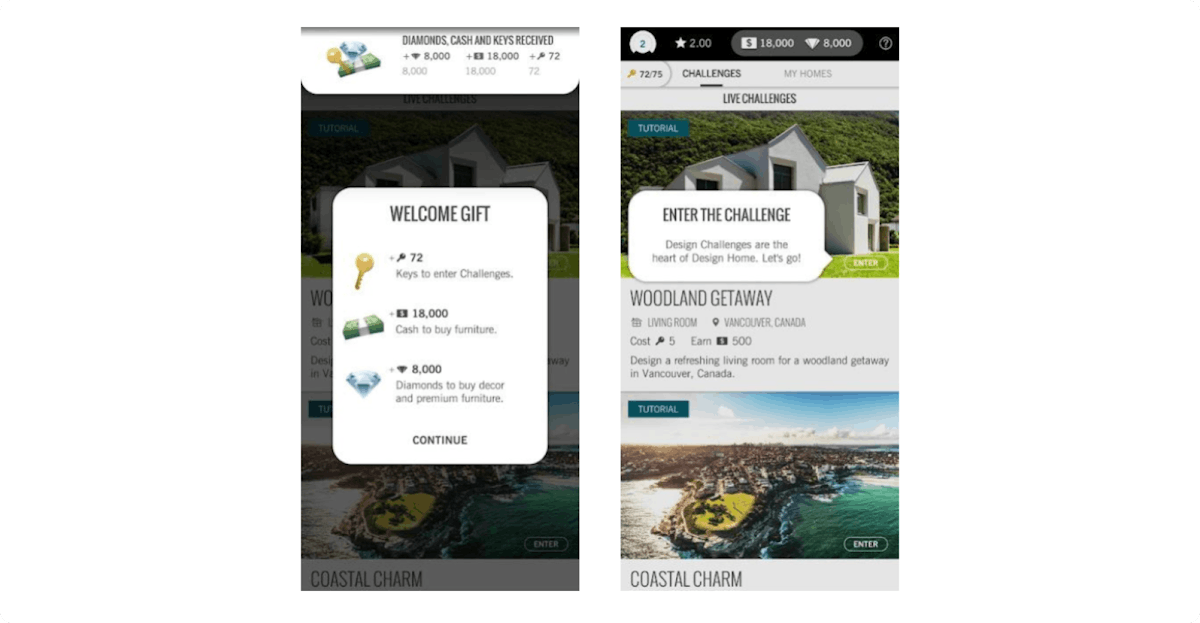 Design Home activates users with a welcome gift.
Design Home activates users with a welcome gift.
Another example comes from Wolt, a food delivery app. Apparently, its activation moment is when a user completes their first order. To be able to do this, a user may need some greater assistance from the app.
First, Wolt has to request access to the user’s location (and explain to the absolute newcomer why the app requires this in the first place). Then, Wolt has to guide the soon-to-be customer to the equivalent of the “search restaurants nearby” feature. And finally, Wolt will even suggest menu translations. In our example, the chosen restaurant happens to only have its menu in Serbian.
All these steps have to be taken to get the user activated and let them proceed to payment.
 Wolt ensures a new user is able to make the first order.
Wolt ensures a new user is able to make the first order.
As we can see, you can ensure a user’s ability to take the target action by coming up with some relevant in-app messages. This can be a one-time pop-up with a welcome offer or a comprehensive onboarding flow—you can choose the format depending on your goals and customize the design to make it fit your app perfectly.
Once you’ve tackled the user’s ability issue, it’s time to ascertain that users have the motivation to take the target action in your app. Again, you can rely on some proven psychology.
Boost user motivation to get activated using psychology
You must have heard of the six principles of persuasion: reciprocity, commitment, social proof, liking, authority, and scarcity. But did you realize that the world’s leading apps actually apply them effectively in their onboarding flows?
Let’s break down the six principles and see how they can benefit your user activation rates.
1. Reciprocity: Activate users with a welcome gift
When a user has just installed an app, for instance, a food delivery app like Deliveroo, in many cases they are shown a pop-up message with a promo code for the first order. It tempts the user to make up their mind and order without any delay. Once the target action has been taken, a user may be considered activated.
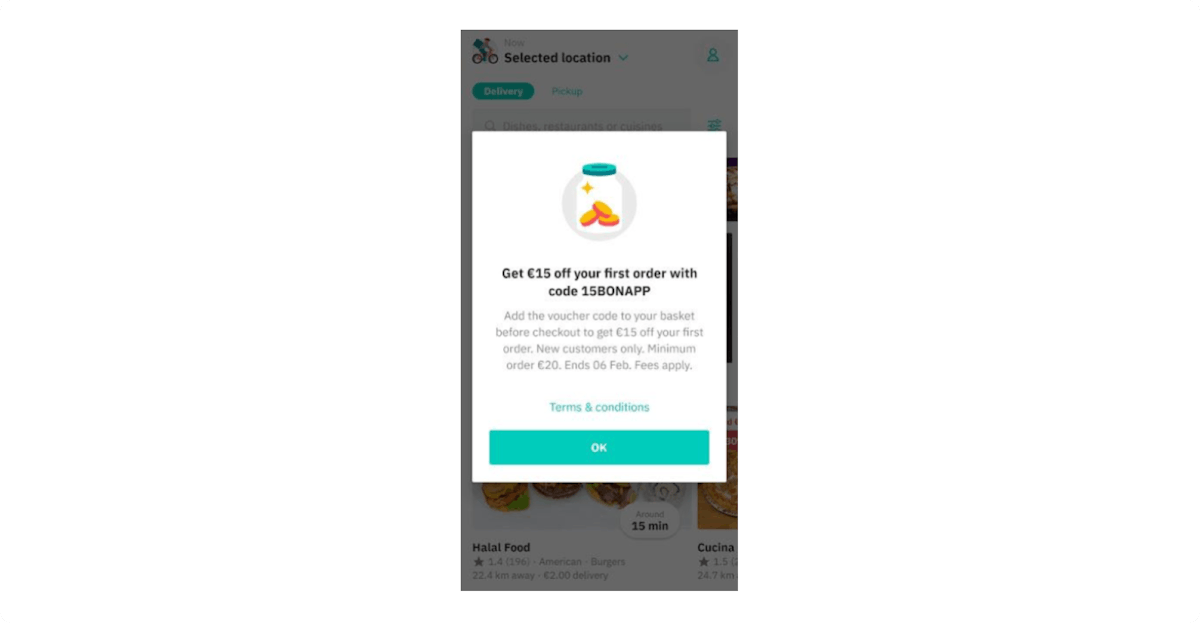 User activation through reciprocity on Deliveroo.
User activation through reciprocity on Deliveroo.
2. Commitment: Let users customize their in-app experience
Longer onboarding flows work well. We’ll take the Down Dog yoga app as an example. On its welcome screens, a user may specify their previous experience with yoga and customize every aspect, from the pace of sessions to the background music. As a result, they feel strongly motivated to stay and enjoy their first deeply personalized experience.
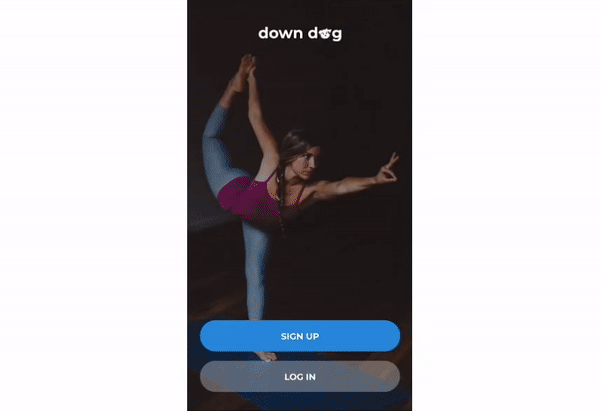
Down Dog’s user onboarding facilitates personalization.
3. Social proof: Activate a user by referencing others
All these people can’t be wrong – the idea that stands behind many decisions. The Insight Timer meditation app uses this principle in its welcome message sent to the new user in-app inbox.
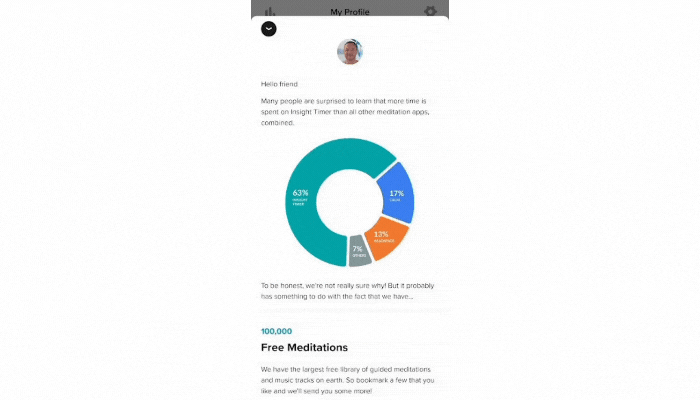
A welcome message sent to a user’s insight time app inbox.
4. Liking: Speak highly of your new user to get them activated
Who do we tend to like? Normally, someone who shows they like us too. This liking (or even, flattering) territory is what the Reface app plays on.
The app is meant for making funny collages by replacing celebrity faces in magazines and movie scenes with a user’s face. To get started, a user is requested to take a selfie to then be able to use it in collages. The app motivates newcomers to complete this simple step by mentioning that it will turn the user into a star. Literally.
Who would resist such straightforward flattery, especially as Reface will 100% deliver on its promise?
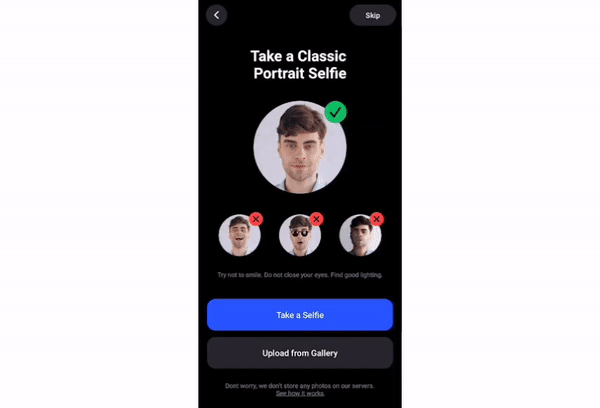
Reface promotes user activation with the line “Just One Selfie and You’re a Star.”
5. Authority: Activate users through the power of recommendation
To highlight authority, most apps would consider hiring influencers to promote use – well, as long as the app can afford it.
italki has a more unique take on the authority principle in user activation. The language-learning platform involves its already-active users in a referral program. A referrer earns its reward after sharing a link to italki with a friend, and that friend receives $10 to spend on their first lesson on the platform.
Which influencer could beat the joint power of a personal recommendation and a discount?
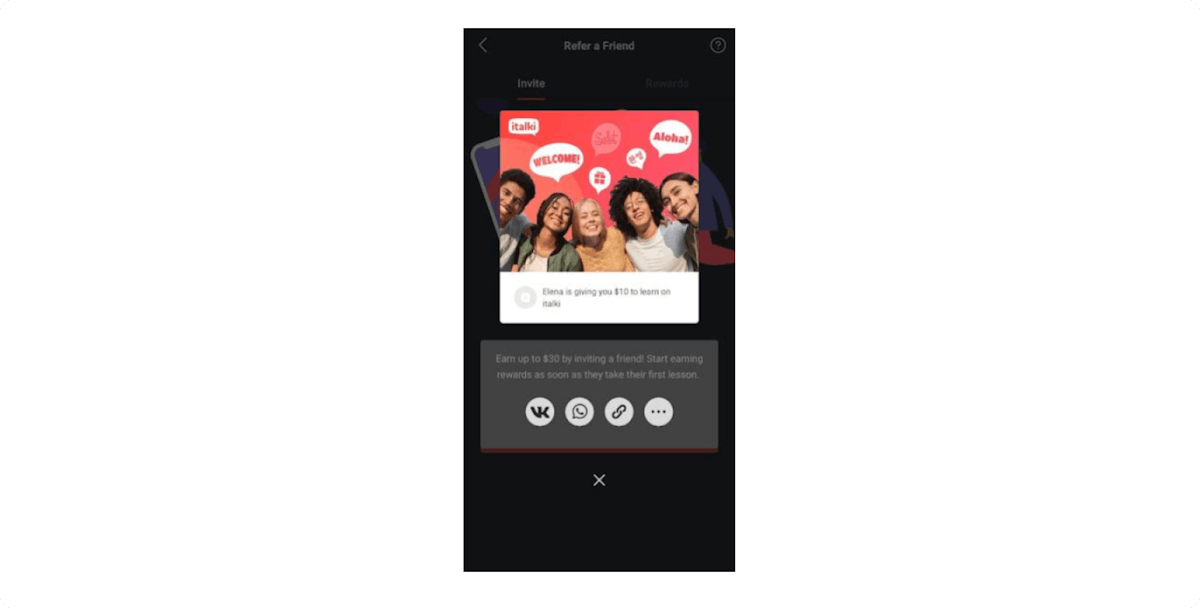 Referral schemes represent an effective way to activate existing users through recommendations (italki).
Referral schemes represent an effective way to activate existing users through recommendations (italki).
6. Scarcity: Encourage users to take target action while they can
Marketers like to play in the urgency field, especially when it comes to driving sales in e-commerce apps. There, an activation point may take place at the moment of a new user’s first purchase.
Have a look at the classic example from Wish. It won’t let a customer leave the cart without paying for the chosen items. To encourage the first purchase right here, the app currently shows in-app messages offering a gift or special discount for new buyers only. This kind of limited-time offer may work for any e-commerce as well as a subscription-based app.
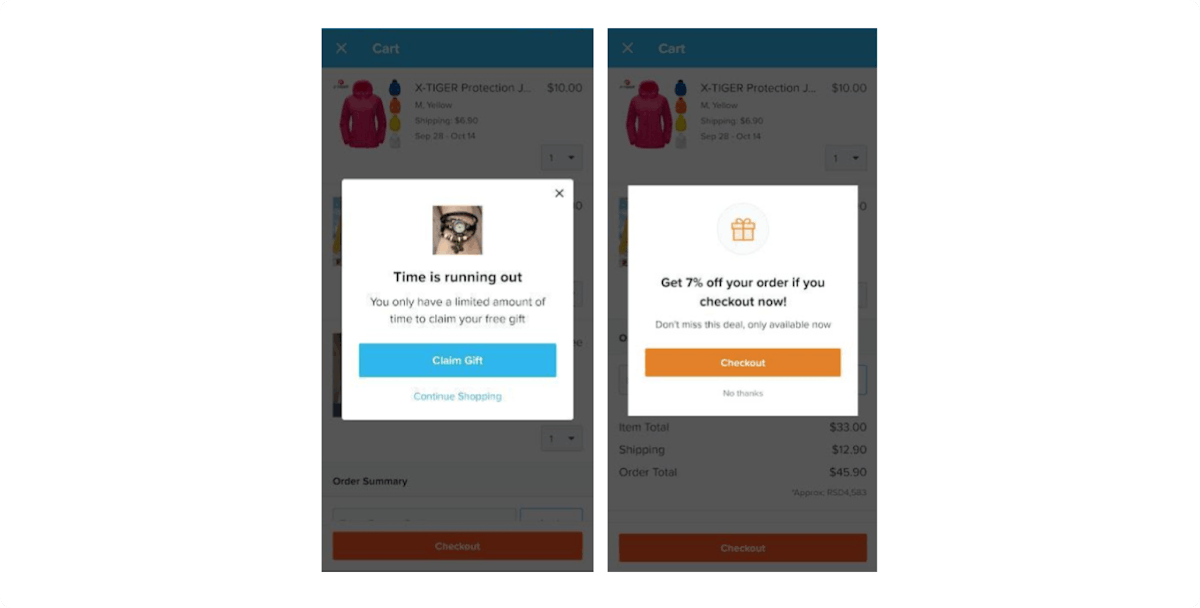 Wish employs scarcity to encourage user activation.
Wish employs scarcity to encourage user activation.
User activation: A stage no app marketer wants to overlook
Of all the app’s AARRR metrics (acquisition, activation, retention, referral, and revenue), the activation rate has the largest effect on app revenue. Luckily, to get more users activated in the app, it takes no more than dedicated effort and a bit of psychology.
Rely on the principles proven by the world’s leading apps, create effective onboarding communications in your app, and see how your business can grow and thrive.
AppTweak can help fuel your App Store Optimization strategy on the App Store and Google Play. Discover how!


 Sukanya Sur
Sukanya Sur

 Osman Soysal
Osman Soysal

 John Koetsier
John Koetsier

 Silvija Lazanin
Silvija Lazanin